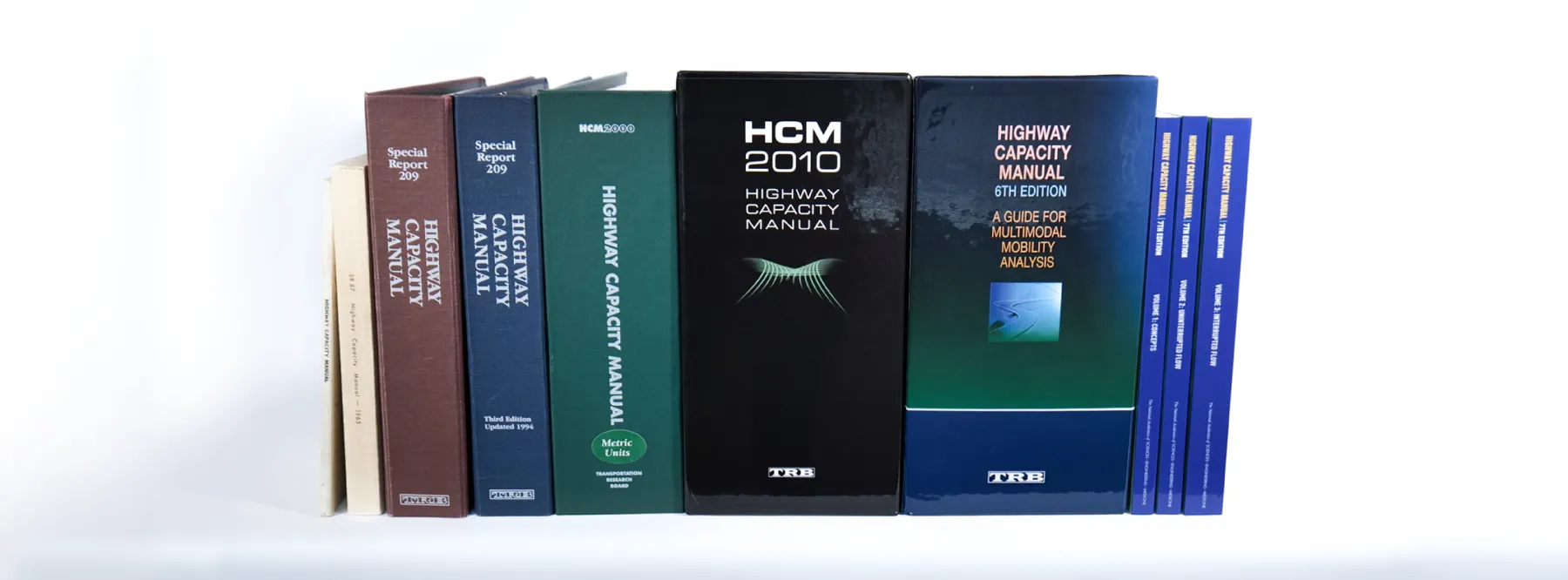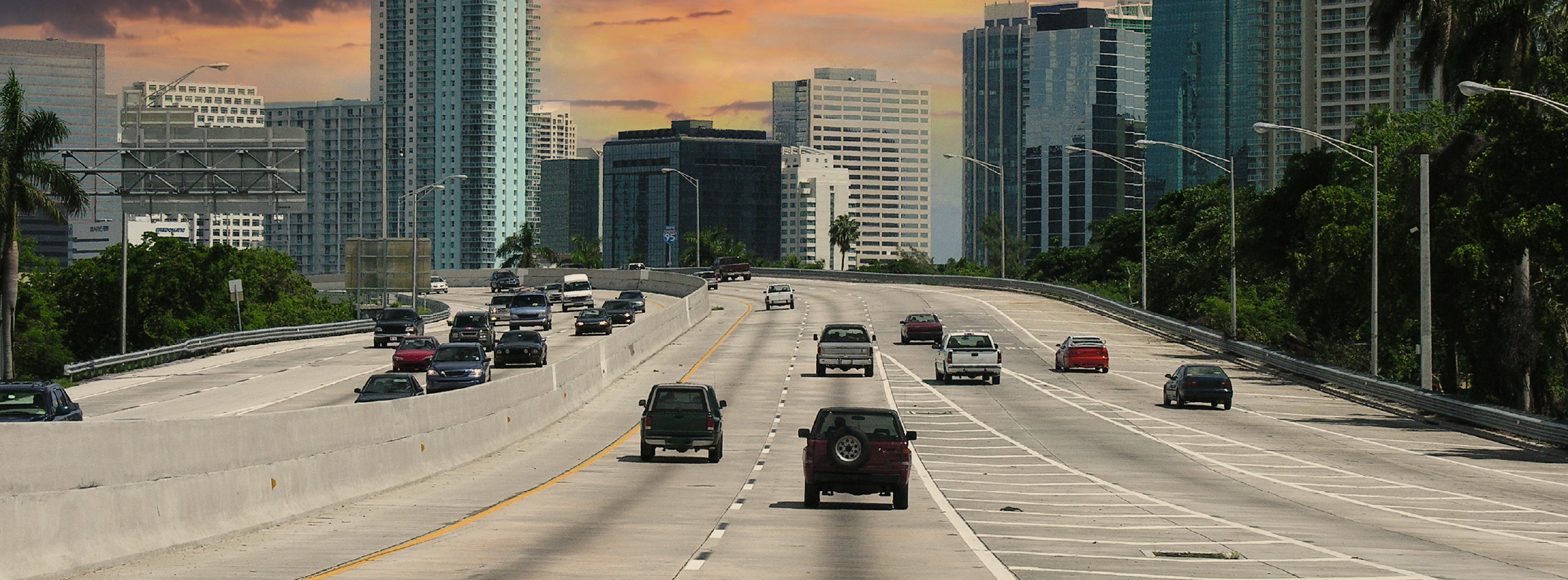Calibration is a crucial step in any analytical model to ensure accurate predictions by better accounting for local factors and unique characteristics of a specific state or region. The Highway Safety Software (HSS) offers an extensive set of calibration features to allow practitioners to adjust their Safety Performance Models to local conditions. This article will discuss the importance of model calibration and provide an overview of the available calibration features in HSS.
Why is Calibration Needed?
The Safety Performance Functions (SPFs) in the Highway Safety Manual Part C, which are fully implemented in HSS, were developed using data from several locations across the United States. As such, there may be significant regional differences that may affect the accuracy of the analysis when the default SPFs are used, such as driver behavior, travel patterns, weather, infrastructure, and other factors.
Calibrated models lead to more accurate safety analyses, ensuring that the benefits of safety improvements are correctly assessed and resources are allocated more efficiently.
Calibration Process in HSS
SPFs for all HSM models can be calibrated by opening the “Parameters” section, as shown below:
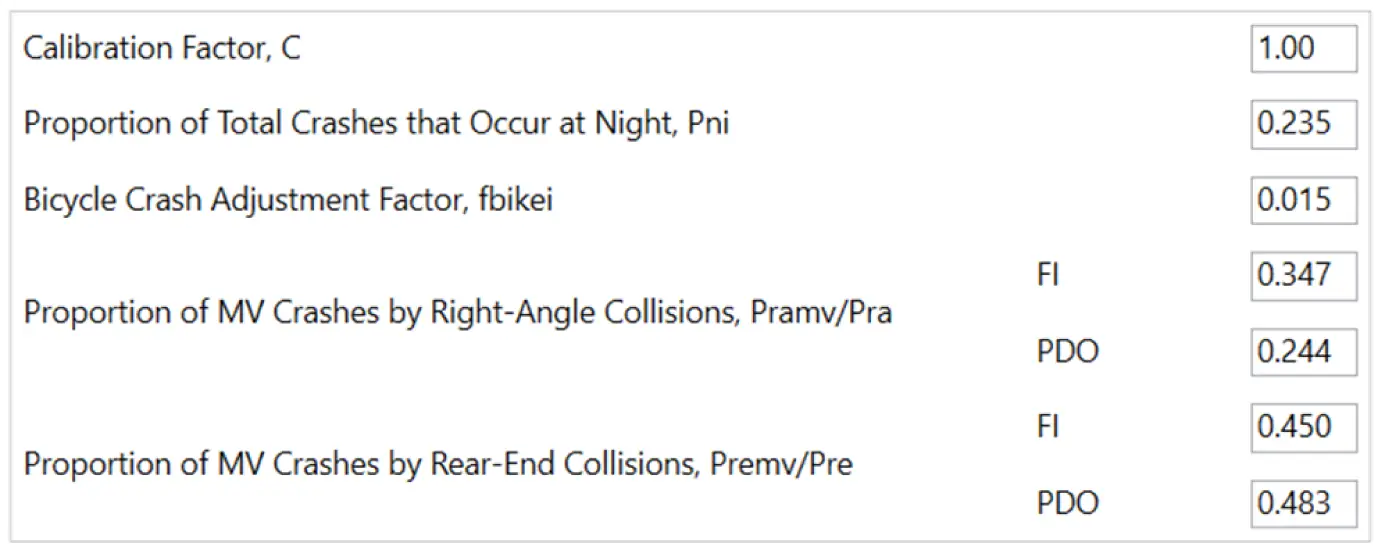
Calibration Parameters for a 4-leg, signalized intersection (4SG)
The Calibration Factor (C) is a common parameter applicable to all HSM models. This input will multiply the crash frequency computed in the corresponding SPFs to produce the final number of predicted crashes.
The Calibration Factor has a default value of 1.0, which means the default SPF results are used. If a calibration factor of 2.0 is used, as shown in the example below, the predicted crashed frequency is multiplied by 2.0 at the end of the analysis:
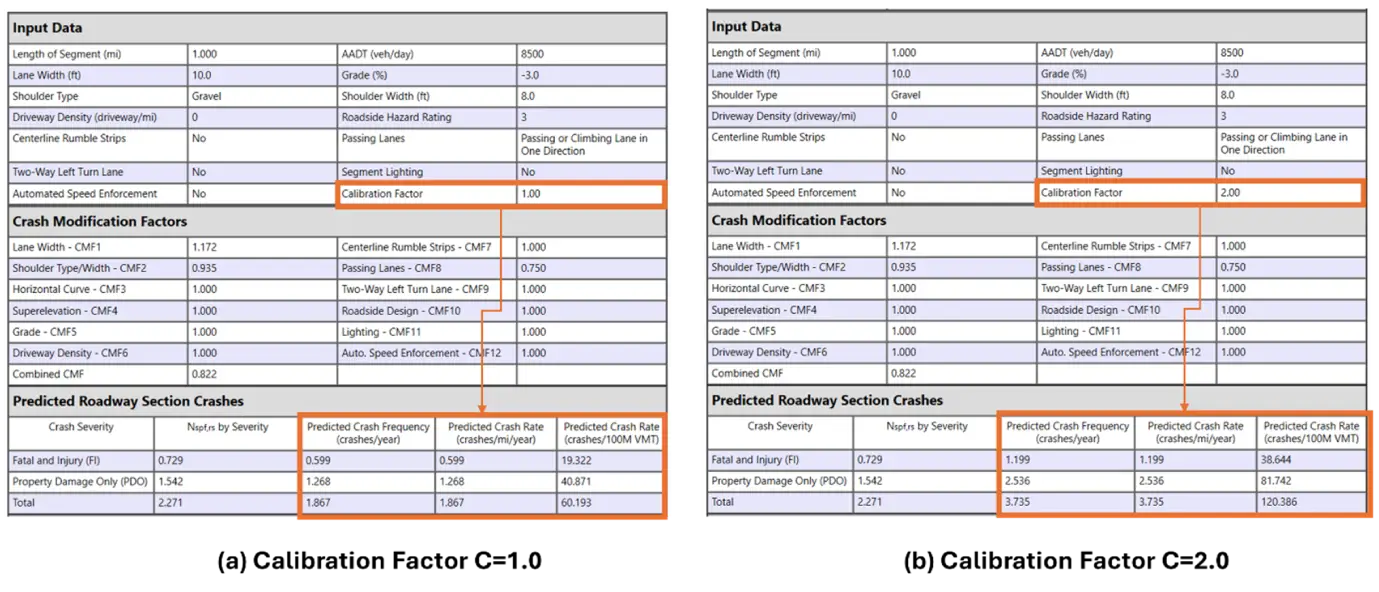
Comparison of predicted crashes using different values of Calibration Factor
Developing Calibration Factors involves a significant amount of work between data collection, modeling and analysis. Therefore, it is typically performed at a jurisdiction level (e.g, a state DOT, or its regional districts). Further guidance on the process can be found here. Several agencies have developed their recommended calibration factors, as shown in the examples below by TxDOT and FDOT:
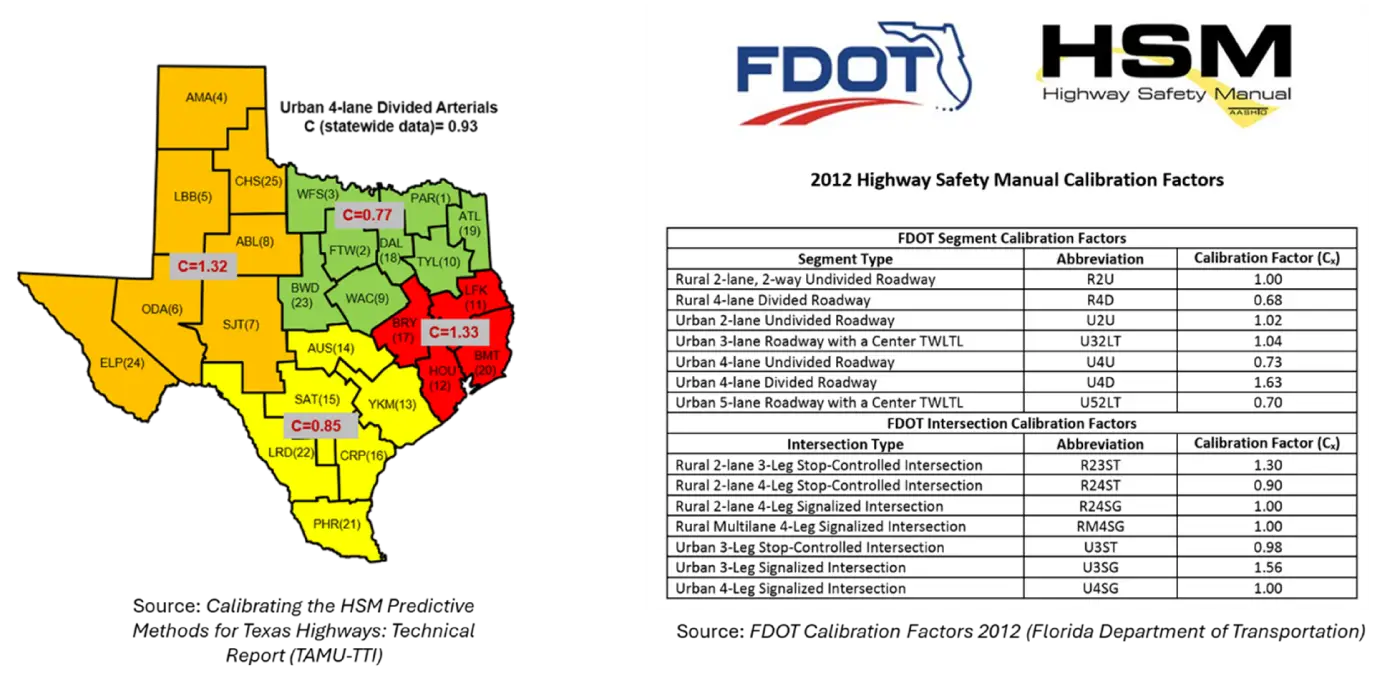
Examples of Calibration Factors suggested by State DOTs
The next sections will discuss additional aspects that can be calibrated using the HSS interface.
CMF-Specific Parameters
Certain Crash Modification Factors (CMFs) can also be calibrated to local conditions to account for certain crash types that are affected by the related configuration. The figure below illustrates the CMF-specific parameters applicable in the analysis of a Rural Multilane Highway segment:
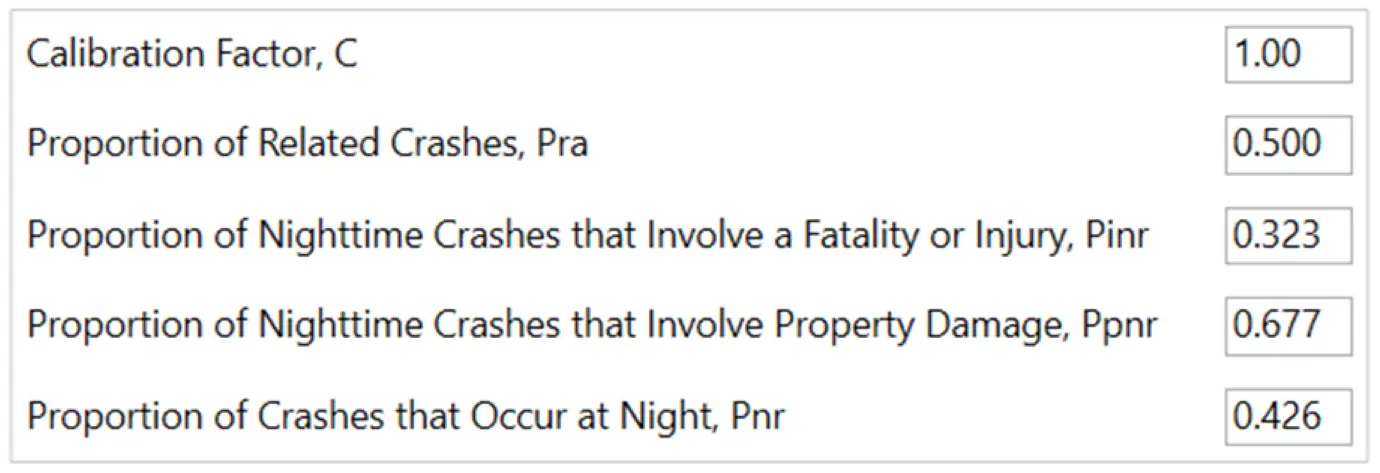
Calibration of parameters in the Rural Multilane Highway module
- Proportion of related crashes (pra): Determines the proportion of crashes associated with the effects of lane width (CMF1) and shoulder configuration (CMF2) – single-vehicle run-off-the-road and multiple-vehicle head-on, opposite-direction sideswipe, and same-direction sideswipe crashes.
- Proportion of nighttime crashes (pnr): Determines the proportion of fatal and injury crashes associated with unlighted roadway segments, associated with the presence of lighting (CMF11).
Crash Type and Severity Distributions
Several SPFs in the Highway Safety Manual can produce a detailed breakdown of crash types (e.g. rear-end, head-on, sideswipe, angle, single vehicle vs multi-vehicle, etc) and crash severities (e.g. Fatal and Injury vs Property Damage Only). Each model in the HSM has different distribution equations with their respective default values, which can also be calibrated in the HSS:
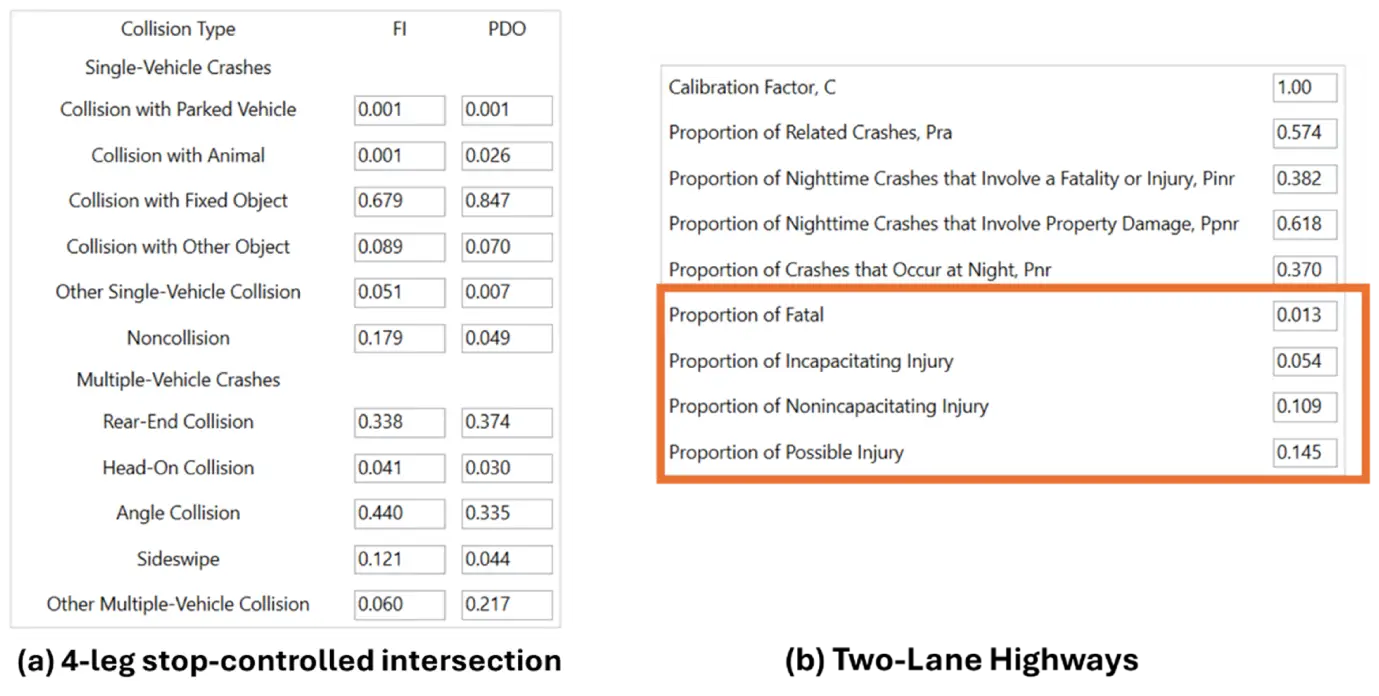
Comparison of crash type and severity distributions on different HSS modules



